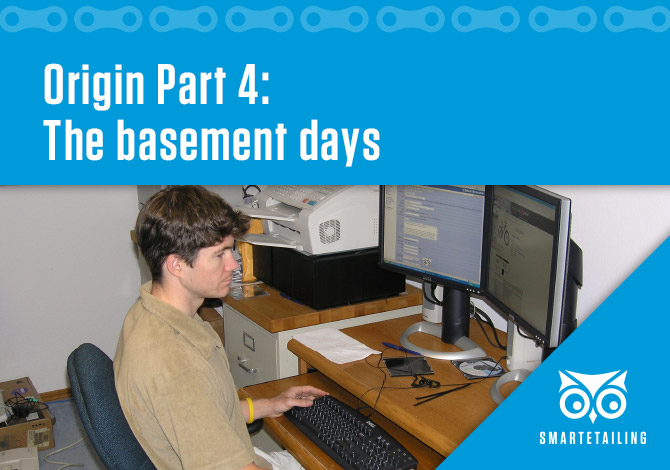
We are celebrating the 20th anniversary of the founding of SmartEtailing by reflecting in this blog series on how the bike industry’s original tech startup came to be.
In the previous post we learned about the early growth in popularity of SmartEtailing among bike shops and cycling brands, along with the financially sustainable mindset of the co-founders.
Started from the bottom
Graff and Brenner operated a modest startup. For the first five years, the company’s sales and content efforts happened primarily out of Graff’s home basement. Brenner began working out of his dining room, and eventually opened an office in Ventura.
Graff recalls with a smirk, “We joked that if someone were ever to write a book about us, the chapter about our early years would be Low Overhead & No Letterhead since we rejected the trappings of more traditional businesses. Fun was a key ingredient to our partnership and our company.”
Brenner handled administration, bookkeeping and the technology side of things. Graff handled sales, brand relations and customer support. They worked together on marketing.
Brandon Dwight, the company’s first employee, was a bike racer at the time who began writing copy and taking photos to populate the product catalog and the library of articles retailers might want to use on their own websites. He has since worked at IMBA, owned a successful multi store bike shop and created his own technology startup.
“Mark had a nice basement office setup,” Dwight remembered. “I had my list of products I needed to get photos ready for and write copy, and I put on headphones and hammered away. Some days I was there for two or three hours, other times longer. I could work remotely before it was a thing because I had a laptop and I was traveling for races.”
Dwight remembers sitting next to Graff, who would be on the phone making sales.
Comments (2)